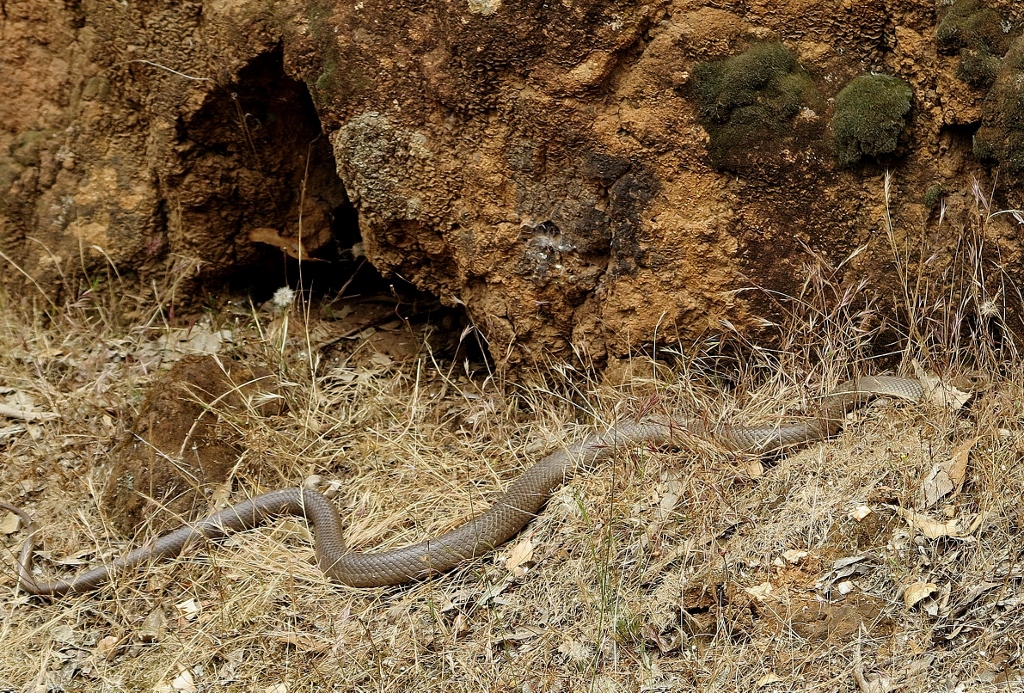The beautiful and mostly misunderstood snake
Posted on 19 November, 2020 by Ivan
There has been plenty of recent sightings of various beautiful snakes in our region. In fact, there are almost daily appearances at this time of year on our social media platforms and chat pages with many central Victorian locals posting images of snakes spotted in their yards or nearby.
It has been a perfect year for snakes in central Victoria. Late summer rains, autumn growth and a perfect spring break has lead to a healthy population of mice, frogs, lizards, and other tasty treats for snakes. Snakes have emerged as the weather warms up and are now in power-up mode for summer and the mating season. They are more common around our urban fringes and rural areas, owing to an abundance of food (e.g. mice are a favoured food source for Eastern Brown Snakes) or water sources (e.g. Tiger snakes prefer wetlands and creeks). The most common snakes around the Castlemaine region and are Eastern Brown, Tiger, Red-bellied Black, and Copperhead. For a full list, and photos and descriptions of each snake, please click here. For information about snakes locally, and how to be snake-safe on your property and see notes from our snake workshop.
Our partners at Friends of the Box-Ironbark Forests (FOBIF) have recently published an article on a snake sighting around the Castlemaine region, and how to live with snakes. We have shared it below, and a nice photograph that was submitted with the article. Please enjoy, courtesy of FOBIF.
A bit of care, and everyone wins.
They’re out: snakes, we mean.
Which means: look out. It’s important to be careful when in areas likely to be frequented by snakes, for obvious reasons. This is virtually an annual preoccupation, so, at the risk of repeating ourselves, we are now going to repeat ourselves.

Eastern Brown snake, Gough’s Range SF, November 12 2020: we need to be careful about snakes, but the brute fact is that they are more at risk from us than the other way around.
And here is another great FOBIF snake post from 2014:
‘The Eastern Brown is highly venomous—but it’s not keen on attacking anyone as big as a human, and … will always try to get away if it can. If cornered, however, it is extremely nervous and aggressive. The moral therefore is, don’t approach any snake, and dress appropriately if going into areas where one might be met. The great majority of snakebite deaths have arisen when people unwisely take on the reptile [if you want to get it away from the house, call a snake catcher]. It is, of course, illegal to kill snakes, which are protected animals. For pets, the best advice is, don’t let them roam around the bush ferreting into holes; in any case, dogs should be on a leash in the Diggings Park.
Common sense is the best defence against snake bite, but unfortunately, hysteria is more common than common sense, as witness a 2013 Sydney Telegraph headline: ‘Snakes are raiding the suburbs…Fatal snake bites will become a tragedy repeated this summer as the deadly reptiles—thriving in hot conditions—slither towards the urban sprawl.’ This horror movie scenario doesn’t fit well with the fact that on average less than 3 people per year over the whole of Australia die from snakebite: far more people are killed by bee stings…
…And the odds are stacked against the snake: more than five million reptiles are killed by cars in Australia every year. According to the Australian Museum, ‘countless’ Brown snakes perish in this way, ‘both accidentally and on purpose’.
For other FOBIF material on the subject of snakes, click here and here.






Leave a Reply